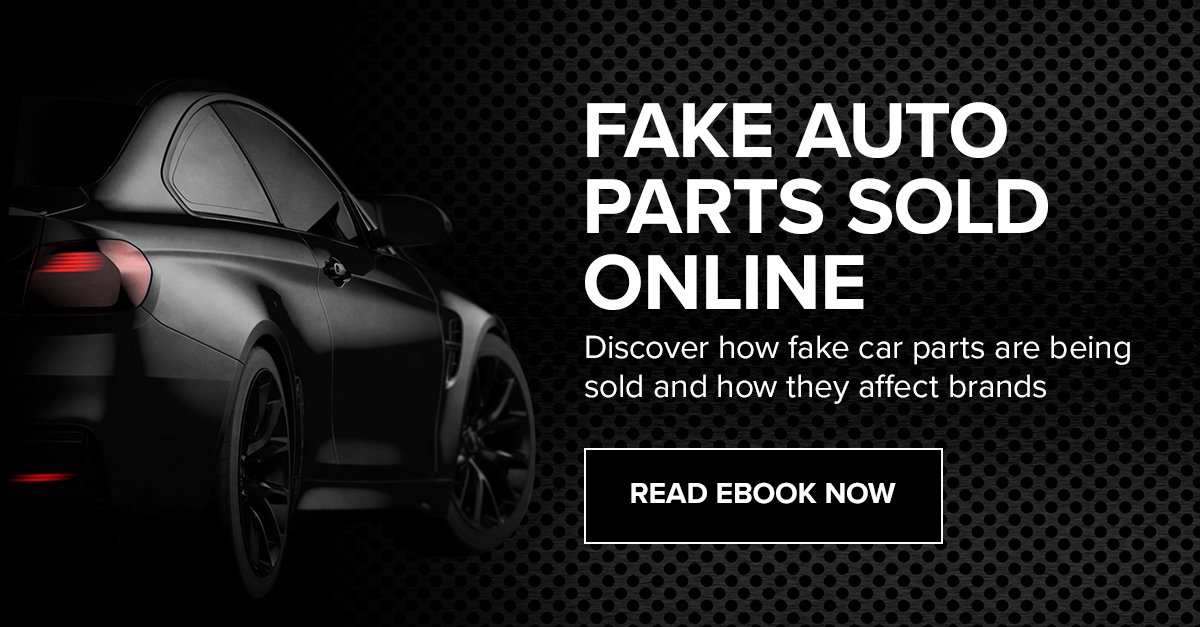
Table of Contents:
Last updated on: June 8, 2022
It’s not every day that you come across a counterfeit item that actually puts human lives in danger. Counterfeit car seats and knock-off car parts can result in thousands of dollars worth of damage to cars and can take shoppers for a ride that ends in disaster.
According to the U.S. Federal Trade Commission, the counterfeit auto-part sector is valued at around $12 billion a year and approximately 80% of these fakes are found to originate in China.
In this article we’ll delve into Red Points’ research on fake car parts online, including shopping habits and the impact on brand reputation.
Key Findings
Fake car parts aren’t limited to replica car body parts. According to our research, parts that are integral to the safety of the car are often faked. Thankfully, no one in our study had purchased a counterfeit car seat, however:
In 2018, Mercedes-Benz also conducted a series of tests on fake brake pads. Their results showed that fake brake pads significantly hampered a car’s ability to stop, whether on flat ground or downhill.
For this research, we used an online survey process that provided us with participants from all across the US. One thousand people participated, and none of them had participated in previous studies by Red Points.
Over a third of the participants said they had bought a fake car part. Car parts are complex and expensive, and the majority of people are not able to tell the difference between real and fake products. So this, combined with serious price incentives on cheaper fake parts, results in people unknowingly buying fakes or having them installed.
The participants who did were asked further questions:
Our results can be further broken down by the age of the participants. For this survey, participants were segmented into groups by ages 18-24, 25-34, 35-44, 45-54, and 55 or above. For simplicity, we’ll call those groups A, B, C, D, and E. A few interesting trends emerge when the data is analyzed in this way. There are similarities between all age groups, but there are also differences in research and shopping habits. Looking at how people conduct research:
A person’s age also affects where they choose to do their shopping:
Over half of the people in the youngest group said they would not buy from an unknown seller even with a discount. It seems that seller reputation is most important for this group, while a majority of people aged 35 and over said the opposite: they would buy a part from an unknown seller if there was a discount.
Even though retirees are stereotyped as not being computer savvy, the data shows that 67% of people over the age of 60 are on social media. Our survey found social media groups research to be most popular with age group B: 57% of that group said they conduct research on social media. However, a decent portion of group E also uses social media—21%. Most brands know that social media is important nowadays. However, it’s also important to keep a social media presence that isn’t just appealing to one age group. For example, instant messaging apps are great to have, but some potential customers may prefer to find an email address and contact the business that way.
Another key finding from our research deals with the impact that fake car parts can have on brands. The alarming thing is that many respondents said they wouldn’t give a brand a second chance. Even if someone came across counterfeit car parts through a third-party seller, they may choose to avoid parts from the brand altogether.
When viewed from the brand’s perspective, it’s a tough situation. A quarter of potential customers may be turned away by one fake product that most likely came from a disreputable third-party source. The fake only exists by riding the coattails of the genuine product. Ideally, customers would think, “Wow, the real part must be really great if someone went to the trouble of knocking it off.” Instead, most people either choose to stay away or be skeptical about buying products made by that brand.
This could mean people may be unaware of how distribution works, like the relationship between a brand and its authorized dealers. By purchasing directly from the manufacturer or an authorized dealer, you lower the chances of receiving a fake product. However, counterfeit items can have lower price points since they aren’t manufactured in the same way. Ultimately, it’s probably low prices that attract most buyers to fake items.
We also took a look at how fake car parts change the feelings that people have towards a brand:
There’s approximately a 1 in 3 chance of someone thinking less of a brand after discovering replica car parts of that brand. Perhaps people assume that it’s the brand’s duty to make sure no fakes enter the market. To be sure, brands should allocate resources to that endeavor. However, dealing with counterfeiters can be like playing whack-a-mole. As soon as one is taken down, another can take its place. Without a comprehensive approach, it’s almost impossible to rid the market of all potential fakes.
The good news about this data is that a healthy portion of respondents said they would think more of the brand. This group may think that fakes are a sign of good products. Certainly, counterfeiters are betting that the product they choose to rip off is popular and will sell.
One other takeaway to be aware of: most participants either can’t tell the difference between real and fake car parts, or they are unsure if they can.
Counterfeiters have become better at faking items in recent decades. It has even come to the point where there’s a category of fakes called “super fakes.” These are items so well that it’s extremely difficult to tell them apart from an original item. It’s safe to assume that many fake car parts may be made well enough to evade detection by general shoppers, or that their online listings use fake photos and reviews.
The fightback has taken many different forms: Recently, Land Rover won a battle in the Chinese courts over a copycat of the Evoque. Almost everything on the car was copied, right down to the interior materials and dashboard. Hyundai U.S. famously released a shocking comparison of their air-bags versus fake ones in order to raise awareness. However for the vast majority of manufacturers it’s a problem that is difficult to trace and even harder to stop.
Technology is always evolving and becoming more accessible to people. Counterfeiters take advantage of this when making fake car parts. Eventually, proprietary techniques or materials can get discovered and knocked off, making fakes seem like weeds that keep growing back. Even so, it’s possible to excavate the weeds and stay a step ahead of the impostors through customer education and brand protection technology.
